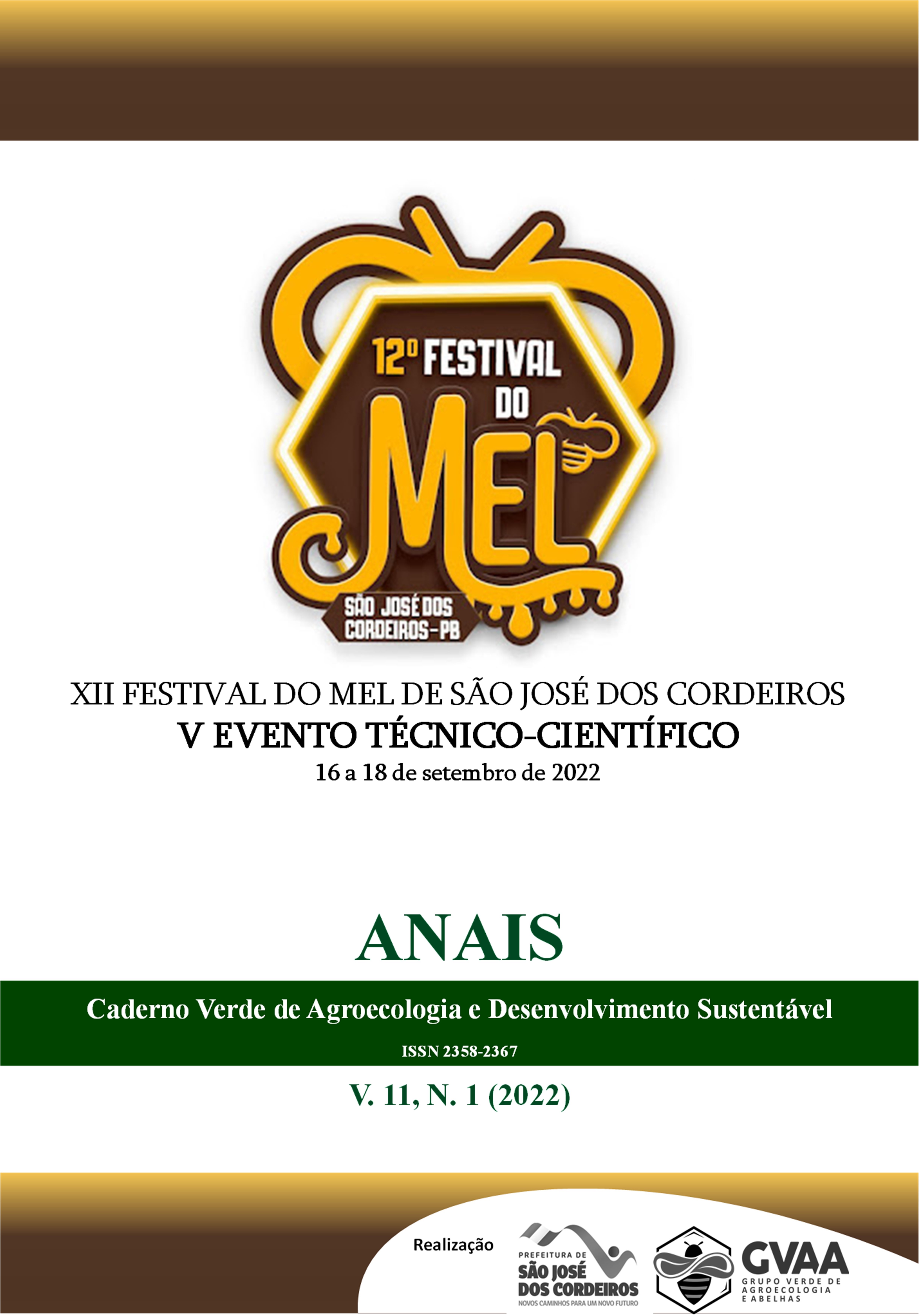Introduction of sorghum seed bran [Sorghum bicolor (L.) Moench] as a protein base for bees
Keywords:
Sorghum bran, Nutrition, Protein, Saccharomyces cerevisiaeAbstract
This research sought to verify the possibility of offering sorghum bran in the protein requirement of bees, since they need values between 20% and 23% of crude protein as optimal values for productivity and survival. In this work, when performing the physicochemical analysis of sorghum, a protein average of 14.90% of the “in natura” bran was obtained. For this study, grain sorghum, organic, fruit of family farming in the community of Riacho Grande, municipality of Mossoró-RN, was used. The harvested sorghum was taken to the animal nutrition analysis laboratory of the department of animal sciences (DCA), of the Universidade Federal Rural do Semi-Árido (UFERSA), where physical-chemical analyzes were carried out for the preliminary determination of dry matter, mineral matter, moisture, ether extract, NDF, ADF, organic matter, water activity, Ph, acidity and protein. The tests were carried out in triplicate and presented the following concentrations: Dry matter (22.49%); humidity (4.74%); mineral ash (1.64%); Organic matter (98.36); Neutral detergent fiber (NDF) (10.25%); Acid detergent fiber (FDA) (1.88%); Water activity (Aw) (0.12); Ethereal extract (0.065g); Crude protein (8.82%); Hydrogen potential (6.1 ± 0.01); Titratable acidity (g acid equivalent/100g) (1.4 ± 0.01). The values show that sorghum needs techniques to increase its protein content, which is observed in the concentrations found, the plant characteristics such as productivity, adaptability and resistance to water stress make this vegetable an excellent option for use as raw material.
Downloads
Published
How to Cite
Issue
Section
License
Termo de cessão de direitos autorias
Esta é uma revista de acesso livre, em que, utiliza o termo de cessão seguindo a lei nº 9.610/1998, que altera, atualiza e consolida a legislação sobre direitos autorais no Brasil.
O(s) autor(es) doravante designado(s) CEDENTE, por meio desta, publica a OBRA no Caderno Verde de Agroecologia e Desenvolvimento Sustentável, representada pelo Grupo Verde de Agroecologia e Abelhas (GVAA), estabelecida na Rua Vicente Alves da Silva, 101, Bairro Petrópolis, Cidade de Pombal, Paraíba, Brasil. Caixa Postal 54 CEP 58840-000 doravante designada CESSIONÁRIA, nas condições descritas a seguir:
O CEDENTE declara que é (são) autor(es) e titular(es) da propriedade dos direitos autorais da OBRA submetida.
O CEDENTE declara que a OBRA não infringe direitos autorais e/ou outros direitos de propriedade de terceiros, que a divulgação de imagens (caso as mesmas existam) foi autorizada e que assume integral responsabilidade moral e/ou patrimonial, pelo seu conteúdo, perante terceiros.
O CEDENTE mantêm os direitos autorais e concedem à revista o direito de divulgação da OBRA, com o trabalho simultaneamente licenciado sob a Licença Creative Commons do tipo atribuição CC-BY.
O CEDENTE têm autorização para distribuição não-exclusiva da versão do trabalho publicada nesta revista.
O CEDENTE têm permissão e são estimulados a publicar e distribuir seu trabalho online (ex.: em repositórios institucionais ou na sua página pessoal) a qualquer ponto antes ou durante o processo editorial, já que isso pode gerar alterações produtivas, bem como aumentar o impacto e a citação do trabalho publicado.








